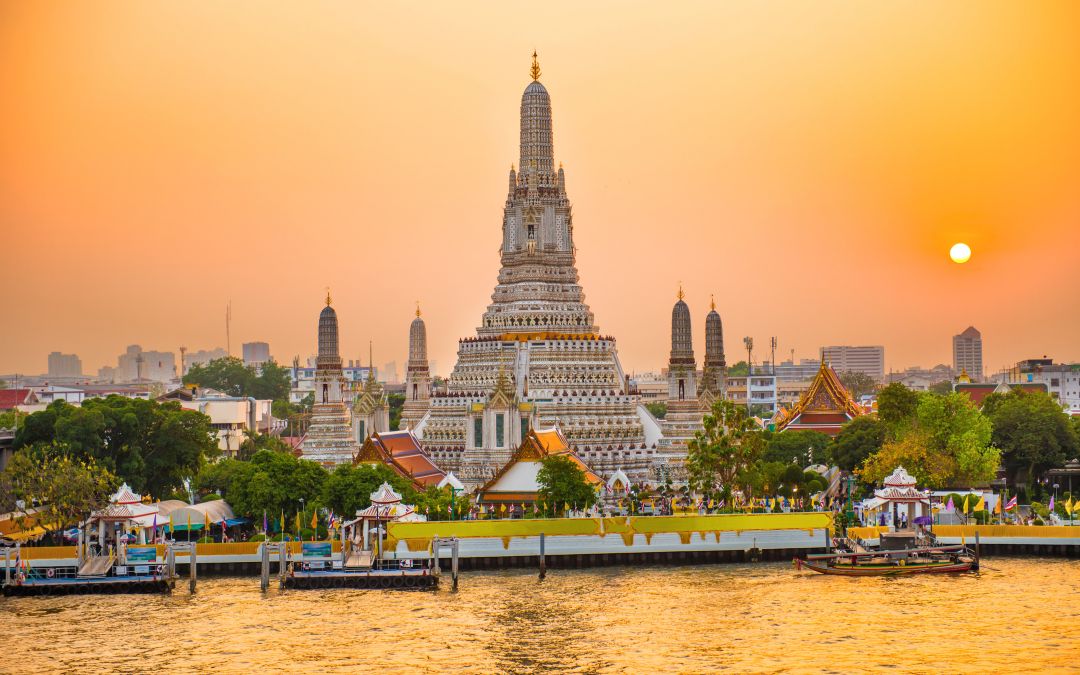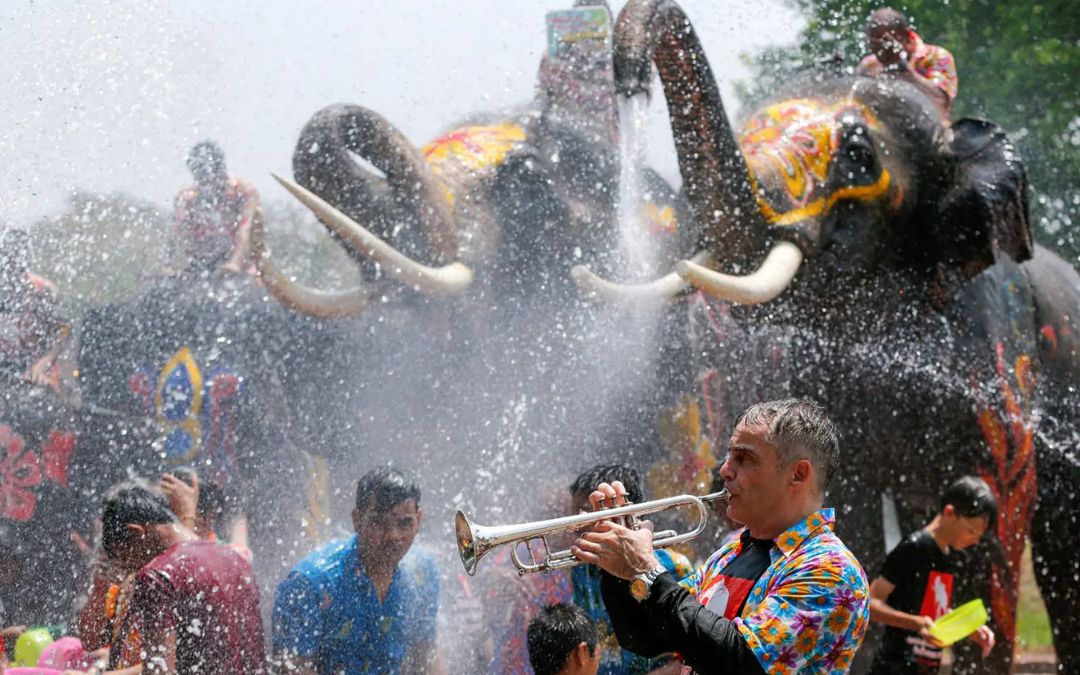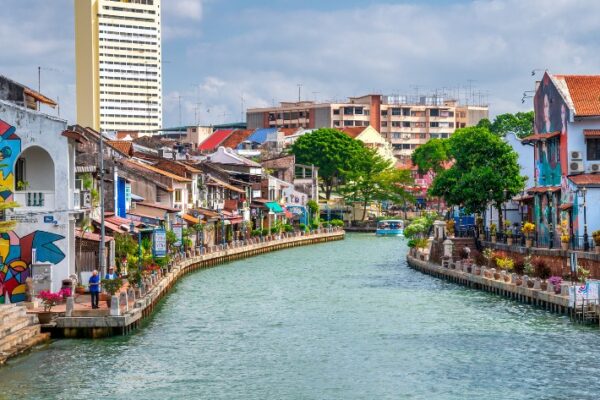How To Choose The Best Time To Visit Thailand Based On Your Travel Style

Thailand’s appeal goes beyond its stunning beaches and bustling cities—it’s a country shaped by its seasons and vibrant traditions. Finding the best time to visit Thailand means aligning your travel plans with the weather, festivals, and activities that suit your interests best. Whether you want to explore ancient temples, lounge on tropical islands, or dive into thrilling adventures, knowing when to go can make all the difference. Let’s explore how the seasons affect your experience and help you choose the ideal time for your trip.
Quick Overview: Thailand’s Climate and Seasons
Thailand’s tropical climate is characterized by three distinct seasons: the cool season, the hot season, and the rainy season. Understanding these seasons can help you plan the perfect getaway, tailored to your preferences for weather, crowds, and activities.
Cool Season (November to February) – Ideal for Travel
The cool season is Thailand’s most pleasant time of year, featuring dry weather, lower humidity, and mild temperatures. In Bangkok, the average daily temperatures range from 23°C to 31°C, with minimal rainfall averaging around 50 mm in November. This period is perfect for outdoor adventures, sightseeing, and beach holidays. It’s also the peak tourist season, so early bookings are advisable.

Wat Arun glows beautifully in the refreshing air of the cool season.
Hot Season (March to May) – Scorching Temperatures
During the hot season, temperatures soar, especially in central and northern Thailand. In Bangkok, average daily temperatures can reach up to 35°C, with April often being the hottest month.
Humidity levels are high, making the heat feel more intense. This season is suitable for travelers who can handle the heat and are interested in cultural attractions or beach escapes.

The coastline offers perfect conditions for swimming and sunbathing.
Rainy Season (June to October) – Lush Landscapes and Fewer Crowds
The rainy season brings short but intense tropical downpours, mainly in the afternoon or evening. In Bangkok, the average monthly rainfall peaks in September at around 320 mm.
Despite the rain, the landscapes are at their greenest, and prices for accommodations are generally lower. It’s a quieter time to explore Thailand without the crowds.

Thailand’s rainy season lasts from May to October with heavy showers.
Tips for navigating Thailand’s regional rainfall differences
- The Andaman Sea coast (Phuket, Krabi) has its rainy season from June to October, with the heaviest rainfall in September and October. If you plan to visit these areas, aim for the dry season between November and April.
- The Gulf of Thailand coast (Koh Samui, Koh Tao) experiences its rainy season later, from October to December. The best time to visit these islands is typically from January to August, when the weather is generally better.
Always check the specific regional climate before booking your trip. Thailand’s coastal weather patterns vary significantly, so choosing the right destination at the right time can help you avoid downpours and enjoy more sunshine.
>> See Tour: Best of Thailand Tour Package
Best Time To Visit Thailand Depending on Your Travel Preferences
If You Are The Cultural Explorer
If you love immersing yourself in local traditions, Thailand offers a rich calendar of festivals that showcase its vibrant culture. The cool season from November to February is ideal for exploring temples and attending festivals in comfortable weather.
November’s Loy Krathong Festival lights up the country with beautiful lanterns and floating baskets on rivers, symbolizing letting go of bad luck. This magical event is especially stunning in cities like Chiang Mai and Sukhothai.

Thais celebrate Loy Krathong by floating lanterns on rivers in November.
April’s Songkran Festival is Thailand’s famous New Year water festival, celebrated nationwide with lively water fights and traditional ceremonies. December also holds special significance with the King’s Birthday, a national holiday marked by ceremonies and public festivities. For a unique regional experience, don’t miss the Yi Peng Lantern Festival in Chiang Mai or the Bun Bang Fai Rocket Festival in the northeastern Isan region.
If You Are a Luxury Leisure Traveler
If you seek upscale comfort, peak season from December to February is the best time to visit Thailand, with perfect weather for luxury travel. During this time, you can enjoy clear skies, mild temperatures, and calm seas—ideal for relaxing in style.
Thailand boasts world-class resorts along both coasts, with private beaches, wellness retreats, and five-star spa treatments. Popular luxury destinations include Phuket, Koh Samui, and Hua Hin, where exclusive resorts provide personalized service and stunning views.

Phuket’s resorts offer world-class luxury with stunning ocean views.
Booking early is essential to secure the best accommodations and experiences. Don’t miss special luxury events like the Phuket King’s Cup Regatta, which attracts elite yacht enthusiasts from around the world. Enjoy rooftop bars, fine dining, and private yacht charters to make your trip truly unforgettable.
If You Are a Beach Lover & Island Hopper
Thailand’s beaches are best enjoyed during the dry season when skies are clear and waters are calm. For the Andaman Coast—including Phuket, Krabi, and Koh Phi Phi—the prime beach season runs from December to March. During this period, average daytime temperatures hover around 28–32°C, with minimal rainfall, perfect for sunbathing, snorkeling, and boat tours.
On the Gulf of Thailand coast, encompassing Koh Samui, Koh Phangan, and Koh Tao, the best weather arrives later, from February to August, when rainfall is lower and sea conditions are ideal for diving and island hopping.

Travelers enjoy beachfront elegance and tropical scenery in Similan Islands.
Traveling in these months guarantees crystal-clear waters and vibrant marine life visibility, especially in popular spots like the Similan Islands or Ang Thong Marine Park. High season pricing applies, so booking accommodations and tours at least 2–3 months in advance is recommended to secure the best deals.
>> Read More: 8 Best Koh Samui Tours You Shouldn’t Miss While Staying On This Island
If You Are The Adventure Seeker
The best time to visit Thailand for trekking, rock climbing, and jungle hikes in northern Thailand is from November to February, when temperatures range between 15°C and 28°C and humidity is low. This cool season offers ideal trail conditions in Chiang Mai, Pai, and Mae Hong Son.
For scuba diving enthusiasts, January to April marks the prime season in the Andaman Sea, including the Similan and Surin Islands. Water temperatures during this period average 28–30°C, with excellent visibility reaching up to 30 meters, perfect for exploring vibrant coral reefs and marine life.

Warm waters and calm seas make the Andaman ideal for diving in the prime season.
Shoulder seasons like October and early March offer fewer crowds and pleasant weather, making them great times for adventure activities with more solitude. Adventure travelers can also enjoy ziplining and white-water rafting during these months, with moderate rainfall enhancing the lushness of Thailand’s landscapes without disrupting outdoor plans.
>> Read More: Ignite Your Wanderlust – Dive Into Unforgettable Thailand Adventures!
If You Are a Digital Nomad or Remote Worker
Thailand is a popular destination for remote workers thanks to its affordable living costs, stable Wi-Fi, and vibrant coworking scenes. Chiang Mai is especially favored from November to February, when the cool, dry weather averages 20–28°C, making outdoor work breaks comfortable.
Beach towns like Koh Phangan attract nomads between February and July, offering a relaxed atmosphere, warm temperatures around 25–32°C, and strong nomad communities with plenty of cafés and coworking spaces. Monthly rental prices in these areas range from $300 to $700, depending on location and amenities.

Digital nomads enjoy Thailand’s beaches while working remotely.
Traveling during the shoulder seasons can bring quieter beaches and more affordable accommodation options. Nomads benefit from a balanced lifestyle here, combining productive workspaces with tropical leisure, while enjoying cultural events and outdoor activities that promote wellbeing.
If You Are The Budget-Conscious Backpacker
Traveling during the shoulder or rainy seasons (May, June, September) offers budget travelers the best value. Accommodation prices can drop by 30–50% compared to peak season, making it easier to find affordable guesthouses and hostels.
Fewer tourists around means more authentic local experiences and a relaxed pace. The countryside and national parks are lush and vibrant thanks to the rain, enhancing scenic trekking and photography opportunities.

Local vendors serve delicious meals at unbeatable prices for travelers.
Some trade-offs include occasional heavy rain and limited ferry or tour operations in certain areas. However, regional variations can help — for example, Koh Samui experiences drier weather in July, making it a smart choice during the rainy months elsewhere.
Backpackers can stretch their budgets by eating street food for as little as $1– $ 3 per meal and using local transportation. Planning and remaining flexible with travel plans can help maximize savings while enjoying Thailand’s rich culture and natural beauty.
>> Read More: The Ultimate Guide of Things to Do in Thailand
Tips For Planning Your Trip to Thailand
To help you enjoy smooth travel and the best experiences, here are essential tips to consider before and during your journey:
- Book flights 2-4 months in advance for the peak season (December to February) to secure better prices and availability.
- Stay updated on festival dates, as many follow the lunar calendar and change yearly — this ensures you don’t miss key cultural events.
- Purchase comprehensive travel insurance, especially if traveling during the monsoon season (June to October), to cover unexpected delays or cancellations.
- Use reliable weather and event calendars to tailor your itinerary around ideal conditions and local celebrations.
- Arrange airport transfers ahead of time for a hassle-free arrival, particularly in busy cities like Bangkok and Phuket.
- Pack light, breathable clothing suitable for Thailand’s tropical climate, and always include rain gear during the wet season.
- Learn basic Thai phrases or download a translation app to enhance communication and cultural respect.
- Carry a reusable water bottle to stay hydrated and reduce plastic waste while exploring.
- Check visa requirements and travel restrictions well before booking to avoid last-minute surprises.
Following these tips helps you maximize your trip, blending comfort, safety, and authentic experiences throughout Thailand.
Create Your Ideal Thailand Experience
The best time to visit Thailand depends on your travel style and preferences, but for most, the cool and dry season from November to February offers the ideally comfortable weather and vibrant experiences. Whether you’re chasing festivals, beaches, or adventures, planning your trip around this period ensures a memorable journey.
Let Asia Pioneer Travel help you design a tailor-made Thailand trip that matches your dreams and interests. Get in touch now to start planning your unforgettable Thailand experience!





